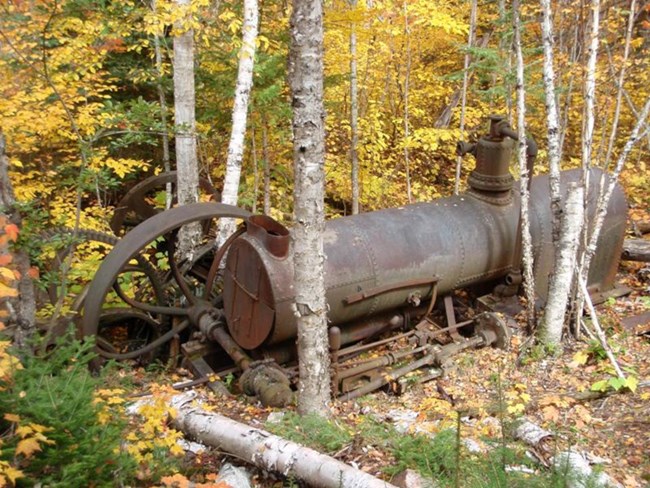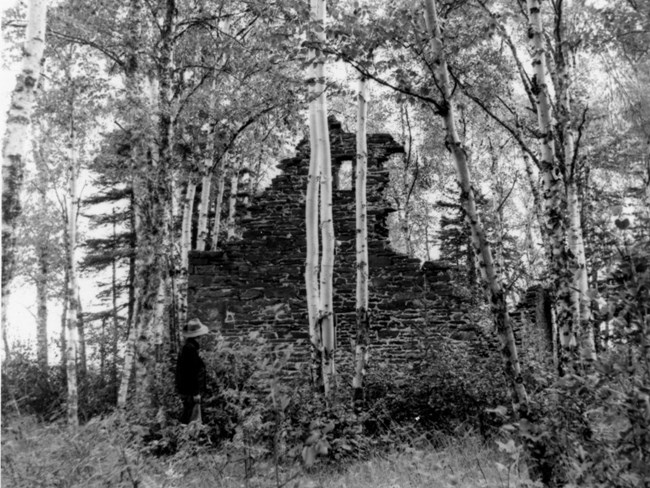Last updated: February 17, 2021
Article
Island Mining Company

NPS
History
On the south side of the island an equally ambitious but shorter-lived operation grew up. S. W. Hill's party discovered a large number of Indian pits to the north of Siskiwit Bay. The Island Mining Company was organized in 1873, and that fall a force of 80 men reported for work on the island. With over 400,000 board feet of lumber shipped to the island, they laid out a townsite on the north side of Siskiwit Bay and built a road two miles to the mine. The group passed the first winter without incident. On March 19, 1874 two men wrote to the Portage Lake Mining Gazette from the settlement:
During the next two years ambitious plans were carried out. Three shafts were opened, ultimately reaching depths of 50, 150, and 200 feet, the deeper ones connected with one another by drifts. A village was built at the mine location, a large hoist was hauled in, and a stone powder house constructed at Senter Point. A sawmill was set up, probably at the mouth of Caribou Creek. Original plans had been to build a stamp mill by the shore, to flume water down from a dam near the mine site, and to build a railroad from the mine site to the stamp mill. However, only part of this was accomplished. A massive earth-fill dam was constructed, and a railroad bed laid down as far as the creek on which the dam was located. Then came a series of disasters. The dock and warehouse burned in 1874, and the fire swept nearly up to the mining location. The price of copper fell. Investors lost confidence. On September 23, 1875, the Portage Lake Mining Gazette reported that all work on the Island Mine had ceased. The conglomerate, rich enough near the surface, had become poorer at greater depths; and the lode was "bunchy." The company cancelled contracts for lumber and stamp mill machinery, and all available supplies, including the tug May thorn, were offered for sale. One man was left as caretaker for the village.
Overcome by failure, the Island Mining Company ceased direct control of the mining operations at Island Mine before any substantial copper was harvested. Over the next three years, the efforts to process rock already excavated and carry out additional stoping were undertaken by tributors, an arragement where an individual miner was paid by the company as a percentage of the ore harvested. They built a small stamp mill on a creek near the mine location, using for water and transportation the dam and railroad already in place, but they, too, were beset with frustrations including the burning of their mill. It was not long before they had abandoned the place. In 1881 Alexander Winchell, the Minnesota state geologist, found the buildings and machinery still on the shore, but soon thereafter the warehouse burned, and today the townsite shows little signs of its former occupancy.

Lawrence Rakestraw Collection
Status
Only three structures remain in the form of ruins: a well, a powder house, and an old tramway grade.
The powder house was built of native sandstone using a coursed rubble masonry method, and is currently a ruin. It is 40' x 20'8", and the roof has collapsed, but portions of four walls remained standing in 1994. The north wall is 12' tall, and has the building's only door. The original cast iron frame lies in the doorway (door was extant in 1960s). The building has large corner stones and the interior walls consist of a rough, untooled mortar finishing.
